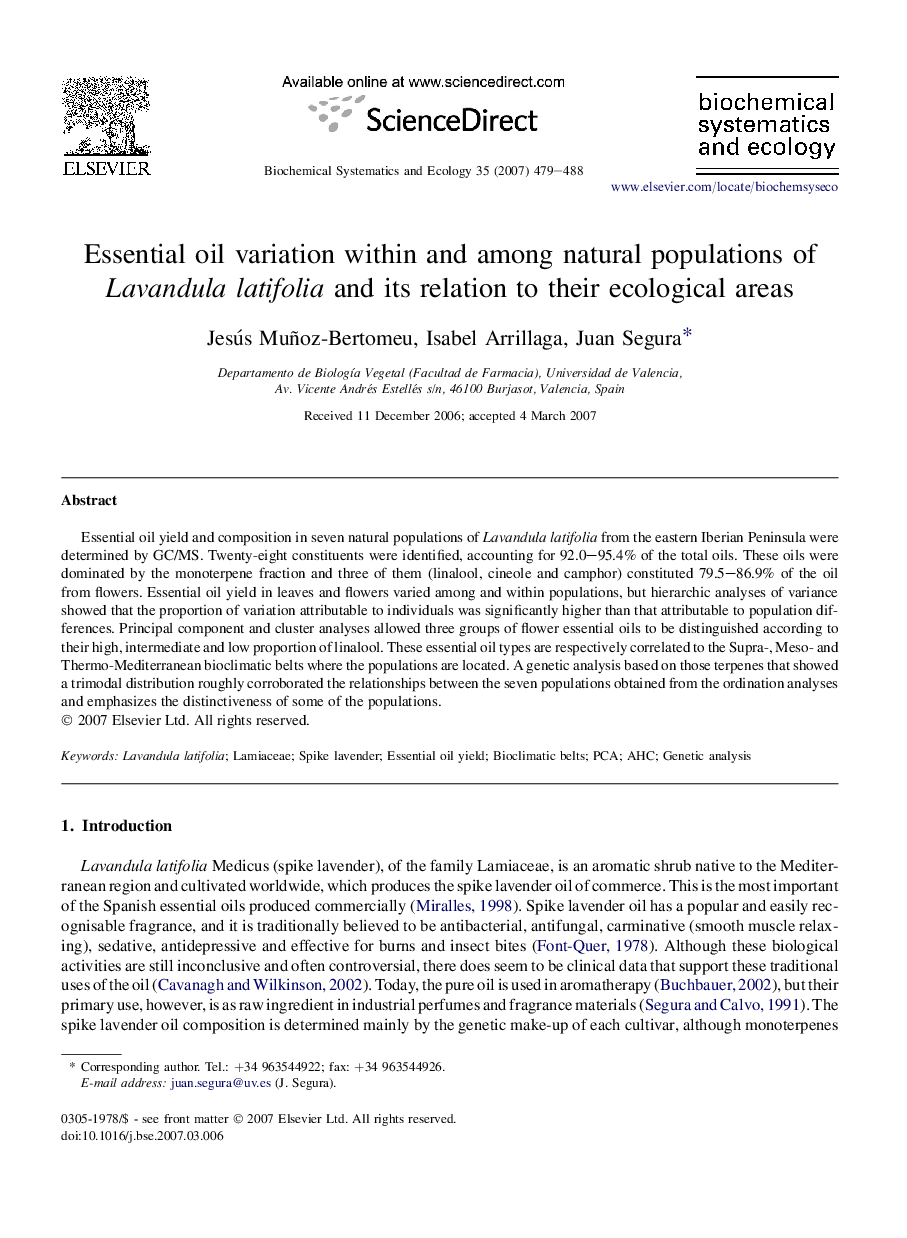| Article ID | Journal | Published Year | Pages | File Type |
|---|---|---|---|---|
| 1354671 | Biochemical Systematics and Ecology | 2007 | 10 Pages |
Essential oil yield and composition in seven natural populations of Lavandula latifolia from the eastern Iberian Peninsula were determined by GC/MS. Twenty-eight constituents were identified, accounting for 92.0–95.4% of the total oils. These oils were dominated by the monoterpene fraction and three of them (linalool, cineole and camphor) constituted 79.5–86.9% of the oil from flowers. Essential oil yield in leaves and flowers varied among and within populations, but hierarchic analyses of variance showed that the proportion of variation attributable to individuals was significantly higher than that attributable to population differences. Principal component and cluster analyses allowed three groups of flower essential oils to be distinguished according to their high, intermediate and low proportion of linalool. These essential oil types are respectively correlated to the Supra-, Meso- and Thermo-Mediterranean bioclimatic belts where the populations are located. A genetic analysis based on those terpenes that showed a trimodal distribution roughly corroborated the relationships between the seven populations obtained from the ordination analyses and emphasizes the distinctiveness of some of the populations.
